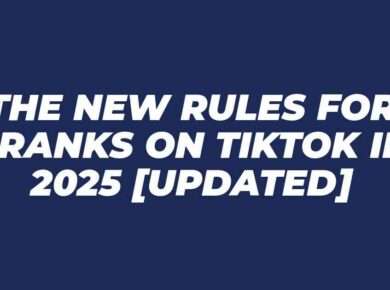In today’s marketing world, understanding the types of social media influencers is crucial for any brand aiming to enhance its online presence. The influencer market has grown substantially, recently surpassing $24 billion, showcasing the power these personalities hold over consumer behavior. But how do you choose the right influencer for your campaign?
There are four main categories: Mega, Macro, Micro, and Nano influencers. Each plays a distinct role and offers varying levels of engagement, reach, and cost-effectiveness. Mega influencers, known for their massive follower counts, can create significant brand awareness, while Micro and Nano influencers foster closer connections within niche communities, often leading to higher engagement rates.
With this guide, you’ll learn the specific traits of each influencer type, how to align them with your marketing goals, and maximize your return on investment. Understanding these dynamics can transform your digital marketing efforts and help you connect authentically with your target audience. For in-depth insights, check out our related articles on influencer marketing trends and strategies.
Understanding Social Media Influencers
To comprehend the various types of social media influencers, it is essential to first explore the concept of influencer marketing itself. This marketing approach has transformed how brands connect with consumers, tapping into the authority and trust that influencers have cultivated among their followers.
Definition of Influencer Marketing
Influencer marketing is a strategy that involves collaborating with individuals who have significant influence over a target audience. Brands partner with these influencers to promote products or services, leveraging their established credibility to drive engagement and sales. The significance of influencer marketing lies in its ability to create authentic connections between brands and consumers. Unlike traditional advertising, influencer-driven content feels more organic and relatable. This strategy is especially effective given that consumers often trust recommendations from influencers more than conventional advertisements.
In essence, influencer marketing not only enhances brand visibility but also fosters trust, ultimately guiding purchasing decisions. For those who wish to explore the nuances of influencer marketing, resources such as the Influencer Marketing Benchmark Report 2025 provide detailed insights into trends and benchmarks.
Growth of Influencer Marketing
The growth of influencer marketing has been staggering in recent years, reflecting shifts in consumer behavior and marketing strategies. As of 2024, the influencer marketing industry was valued at approximately $24 billion, highlighting its status as a vital component of modern marketing budgets. Projections suggest this market could reach about $33 billion by 2025, illustrating a compound growth rate that has nearly tripled since 2020.
Recent trends indicate a strong pivot towards micro and nano influencers, as brands discover their ability to engage niche audiences effectively. These smaller influencers often yield higher engagement rates compared to their mega counterparts, as their followers perceive them as more relatable.
Moreover, the usage of data analytics has become pivotal in shaping influencer collaborations, allowing brands to select influencers whose audiences align perfectly with their target demographics. For additional insights into the influencer market’s growth, you can check out 29 Influencer Marketing Statistics for Your Social Strategy.
Staying informed on these trends is crucial for brands aiming to maximize their influencer marketing strategy. Understanding how to navigate this evolving landscape can significantly influence campaign success. This knowledge not only helps in choosing the right influencers but also enhances the overall effectiveness of marketing efforts.
Mega Influencers
Mega influencers are a notable category in the influencer marketing spectrum, primarily defined by their extensive reach and celebrity status. They typically have follower counts exceeding one million, which positions them uniquely in the market. Understanding their characteristics, benefits, drawbacks, and real-world success stories can help brands make informed decisions about their marketing strategies.
Characteristics of Mega Influencers
Mega influencers possess distinct traits that set them apart from other influencer categories:
- Follower Count: They boast a massive following, often exceeding one million followers. This large audience means they can reach a vast number of consumers with a single post.
- Celebrity Status: Many mega influencers are celebrities or public figures, which adds to their appeal for brands looking to leverage their fame. Their status often translates into higher engagement and visibility.
- Diverse Audience: The typical audience of mega influencers is broad and varied, spanning multiple demographics. This diversity allows brands to reach potential customers from different backgrounds and interests.
However, the size of their following can sometimes lead to lower engagement rates compared to micro or nano influencers, as followers may feel less connected to them personally.
Benefits and Drawbacks
Utilizing mega influencers for brand campaigns offers both advantages and disadvantages:
Benefits:
- Wide Reach: Mega influencers can significantly boost brand visibility due to their extensive follower base, making it easier to reach a large audience simultaneously.
- Credibility: Their celebrity status often lends credibility to the products they endorse, as followers tend to trust recommendations from figures they admire.
- Immediate Impact: Campaigns featuring mega influencers can generate quick results, driving sales and brand awareness in a short time frame.
Drawbacks:
- Costly Collaborations: Engaging a mega influencer can be a significant financial investment, with fees typically exceeding $1 million per post, depending on the influencer’s reach and niche.
- Lower Engagement Rates: While they have a broad reach, mega influencers may achieve lower engagement rates. This disparity can lead brands to question the effectiveness of their investment.
- Less Authentic Connections: The vast follower base may create a barrier to personal interaction, leading followers to perceive the influencer as less relatable compared to smaller influencers.
Case Studies of Mega Influencers
Examining case studies of successful mega influencers can provide valuable insights into their effectiveness:
- Kylie Jenner: As a prominent figure in the beauty industry, Kylie often mixes lifestyle content with beauty promotions. Her partnership with various beauty brands has led to a significant increase in product sales and visibility, showcasing the ability of mega influencers to drive brand success.
- Cristiano Ronaldo: With over 500 million followers on Instagram, Ronaldo is not just a sports icon but also a marketing powerhouse. Brands often collaborate with him to target sports and lifestyle markets, resulting in exceptional return on investment.
- Selena Gomez: Known for her music and acting career, Selena uses her influence to promote various products, including beauty lines and philanthropic efforts. Her genuine connection with her audience has led to successful campaigns that resonate well with her followers.
For more insights on the impact of influencers, check out Mega Influencers: What Are They and Why You Need Them in Your Strategy. Understanding these case studies helps brands to strategically align their marketing efforts with the right influencers for maximum impact.
Macro Influencers
Macro influencers serve as a bridge between mega influencers and those with fewer followers. Typically characterized by their follower count, these influencers boast an audience ranging between 100,000 to 1 million. Their substantial reach allows them to create impactful marketing campaigns while fostering genuine connections with their audience.
Profile of Macro Influencers
Macro influencers often come from diverse backgrounds, and their real names may vary widely. Generally, they are in their late twenties to early forties, but there are exceptions. They might have started their careers in niches such as lifestyle, fitness, gaming, or beauty, effectively establishing authority in their respective fields.
A few key characteristics include:
- Age Range: Most macro influencers are typically aged between 25 and 40 years.
- Real Names: Many have built their brands under their real names, which helps to maintain authenticity.
- General Attributes: Macro influencers are known for their trustworthiness and relatability. They often engage actively with their audience and develop loyal followings, which is vital for their marketing effectiveness.
As they continue to grow their influence, many begin to branch out into additional platforms and content types, keeping their audience engaged.
Earnings and Engagement Levels
The earnings of macro influencers can vary depending on their niche, engagement rates, and overall reach. On average, macro influencers may earn between $1,200 to $5,000 per sponsored post, depending on factors like audience demographics and market demand. For some of the most prominent influencers, earnings can reach upwards of $10,000 per post.
Engagement rates tend to range from 2% to 5%, often influenced by the influencer’s ability to connect with their audience. Factors such as quality content, authenticity, and responsive interaction play critical roles in determining engagement levels. Brands often seek macro influencers for their balanced combination of broad reach and meaningful engagement, making them a popular choice in marketing strategies.
Examples of Macro Influencers
Here are some popular macro influencers who have made significant impacts in various niches:
- Selena Gomez
- Followers: Approximately 422 million on Instagram
- Earnings: Estimated to charge around $2.5 million per post
- Known for her music and acting, she collaborates with several beauty brands, showcasing her influence in the beauty sector.
- Zach King
- Followers: Over 25 million on Instagram
- Earnings: Earns around $5,000 per post
- Renowned for his creative video content, he engages fans with captivating visual storytelling.
- Aimee Song
- Followers: About 6 million on Instagram
- Earnings: Estimated at $4,000 per post
- As a fashion blogger, she shares styling tips and brand collaborations, resonating well with her audience.
These macro influencers demonstrate that they can effectively engage their audience while driving impressive brand collaborations. Their varied content strategies and authentic interactions enhance their marketing effectiveness, making them valuable partners for brands seeking to expand their reach.
For further insights about influencer earnings, check out How Much Do Influencers Make in 2025 – Taggbox. Additionally, you can explore more about the journey into becoming a social media influencer in How to Become a Social Media Influencer in 2025.
Micro Influencers
Micro influencers stand out in the marketing ecosystem due to their unique attributes and the connections they forge within specific niches. With follower counts typically ranging from 1,000 to 100,000, these influencers have become an essential part of many brand strategies. Their ability to engage audiences authentically sets them apart from larger influencers, making them valuable partners for targeted marketing initiatives.
Attributes of Micro Influencers
Micro influencers are characterized by a few key attributes that contribute to their effectiveness:
- Follower Count: Unlike celebrities, micro influencers maintain a smaller but dedicated following, generally between 1,000 and 100,000. This allows them to foster deeper connections with their audience.
- Niche Focus: They often specialize in specific areas such as fashion, travel, fitness, or technology. This niche focus enhances their credibility and authority within those topics, attracting followers who share similar interests.
- Audience Interaction: Micro influencers typically enjoy higher engagement rates than their larger counterparts. Their communities tend to perceive them as more relatable and trustworthy, leading to increased interaction through likes, comments, and shares.
This close-knit relationship not only drives follower loyalty but also positions micro influencers as opinion leaders in their niches. These dynamics make them particularly appealing to brands seeking genuine connections with their target market.
Return on Investment for Brands
Brands are increasingly recognizing the return on investment (ROI) that micro influencers offer. Collaborating with them can yield significant benefits, including:
- Cost-Effectiveness: Micro influencers are often more affordable than macro or mega influencers. This lower cost allows brands to allocate budgets more effectively across multiple campaigns, engaging several micro influencers simultaneously.
- Higher Engagement Rates: Studies have shown that micro influencers can achieve up to a 60% higher engagement rate compared to larger influencers. This increased interaction translates to better visibility and more authentic connections with consumers.
- Brand Loyalty: By associating with micro influencers who align with their values and target audience, brands can cultivate a sense of loyalty among their followers. When micro influencers advocate for a product, it feels more like a personal recommendation rather than a paid promotion.
For further guidance on measuring ROI in influencer campaigns, the resource on A Beginner’s Guide to Measuring ROI in Influencer Campaigns can provide valuable insights.
Notable Micro Influencers
Several micro influencers have successfully leveraged their niche expertise and engaged audiences to drive impactful campaigns. Here are a few examples:
- Francesca Newman-Young: This travel influencer with 100K followers shares authentic travel experiences, partnering with brands to create immersive content that greatly resonates with her audience.
- Julie Selman: With 88K followers in the fashion niche, Julie captivates her audience with styling tips and outfit ideas. Her collaborations with brands have significantly impacted their visibility in the competitive fashion market.
- Russ Crandall: Known as thedomesticman, Russ, with 36K followers, focuses on food content, specifically healthy recipes. His strong engagement has turned collaborations into successful ventures for food-related brands.
- Kyle Luigs: An athlete and sports influencer with 31K followers, Kyle shares his fitness journey, motivating his followers while effectively promoting fitness products.
These influencers demonstrate that collaboration with micro influencers can effectively bridge the gap between authenticity and reach. By identifying the right micro influencer for a brand, companies can enhance their marketing strategies and foster meaningful connections with consumers.
For more on the dynamics of micro influencers, check out the Micro-influencer Marketing Guide. This resource provides additional context on leveraging micro influencers to enhance marketing results.
Nano Influencers
Nano influencers have emerged as a powerful force in the marketing world. They are characterized by their small follower counts, typically between 100 and 1,000. These influencers may not boast the massive audiences of their larger counterparts, but they often deliver higher engagement rates and authentic connections with their followers. This section explores the unique traits of nano influencers, their advantages, and successful case studies demonstrating their impact in marketing strategies.
Overview of Nano Influencers
Nano influencers are social media users who cultivate small, dedicated followings. Defined as having fewer than 1,000 followers, they typically engage with their audience on a personal level. Their impact lies not in the number of followers, but in the quality of those connections. This close-knit community allows them to share content that resonates deeply with their audience, often leading to higher engagement rates than macro and mega influencers.
High Engagement and Authenticity
One of the key benefits of working with nano influencers is their exceptional engagement levels. Because they often maintain a genuine relationship with their followers, their endorsements come across as authentic and relatable. When a nano influencer shares a brand’s product, their followers perceive it as a personal recommendation, not just a paid promotion.
In fact, research shows that nano influencers can achieve engagement rates that are 60% higher than those of larger influencers. This increased interaction is especially valuable in a landscape where consumers crave authenticity and connection. Brands benefit from this authenticity, as it fosters trust and loyalty among their target audiences.
Successful Case Studies
Numerous brands have successfully harnessed the power of nano influencers in their marketing campaigns. Here are a few noteworthy examples:
- A Local Coffee Shop: A local coffee shop partnered with a nano influencer who shared daily lifestyle content on Instagram. The influencer’s authentic posts about the shop’s atmosphere and unique drink offerings attracted a surge of local customers. The coffee shop saw significant increases in foot traffic and engagement on its social media platforms.
- Beauty Brand Collaboration: A new beauty brand collaborated with several nano influencers to promote its skincare line. Each influencer shared personal testimonials and before-and-after photos, highlighting the product’s effectiveness. The campaign generated buzz and resulted in a 40% increase in product sales during the campaign period.
- Fitness Apparel Marketing: A fitness apparel brand engaged nano influencers who had strong ties to fitness communities. These influencers shared workout routines while showcasing the apparel in action. The brand experienced a notable spike in engagement and followers after these authentic endorsements.
For brands looking to explore the potential of nano influencers, resources like The Rise of Nano-Influencers provide insights into successful strategies and case studies, showcasing how these influencers can effectively drive engagement and sales.
In summary, nano influencers offer a unique and valuable contribution to marketing campaigns. Their authenticity, engagement, and ability to connect deeply with their followers make them an essential element in modern influencer marketing strategies.
Conclusion
Understanding the four types of social media influencers—Mega, Macro, Micro, and Nano—can significantly enhance your marketing strategies. Each category serves a unique purpose, from Mega influencers offering vast reach to Nano influencers providing authentic engagement in niche communities.
Choosing the right influencer type depends on your brand’s specific goals, target audience, and budget. Brands should consider the demographics and interests of the influencer’s followers, as well as the natural alignment with their products or services.
As you plan your next campaign, reflect on which influencer category aligns best with your objectives. Are you aiming for broad brand awareness or deep community engagement? Your choice can shape the success of your marketing efforts. Explore our extensive resources on influencer marketing trends to further develop your strategy and optimize your influencer partnerships.





